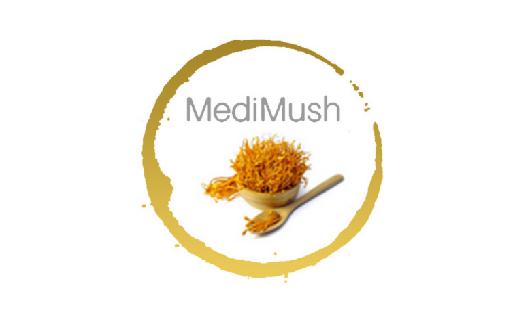Cordyceps and sports performance
 Cordyceps and sports performance
Cordyceps and sports performance
The craving to increase physical performance and at the same time dominate in a competitive scenario is far from a new concept.
For hundreds of years, those athletes competing have sought to use an array of concoctions with which to enhance performance.
Included amongst them were the Ancient Greek Olympians who routinely took various substances before performing. Things such as mushrooms, dried figs and Strychnine. Not just athletes either.
The Norseman before overseas raids would often increase their physical attributes and hence fighting abilities through the consumption of hallucinogenic mushrooms.
Cordyceps and sports performance with Chinese distance runners
In modern times Chinese women distance runners were taking Cordyceps in chicken broth every day and this, seemingly, helped them to break world records in 1993.
Found primarily in the Qinghai – Tibetan plateau in Central Asia, Cordyceps (which is also known as Caterpillar fungus) are fundamentally parasitic mushrooms that live on the larvae of butterflies and moths.
These acclaimed mushrooms have been in use for centuries amongst traditional Chinese and their medicine. They grow in mineral-rich soil at low temperatures but high altitudes which makes their harvesting a pretty treacherous and dangerous exercise.
Given Cordyceps reputed many and varied health benefits, relative rarity, remote terrain and challenging geography, it is no surprise to learn that they were traditionally the preserve of the Emperor’s court as well as Chinese nobility.
Even today, they are sold in Asian markets at high prices.
Nowadays there are six varieties focused on and cultivated for their medicinal properties. Cordyceps Sinensis is the most common and also the most promising.
Contained within this mushroom are many compounds including vitamins B1, B2, B12, E, K and all essential amino acids.
They also contain a good many sugars, polysaccharides, proteins, sterols and a lot of macro and microelements.
Cordyceps are used (particularly in traditional Chinese medicine) to alleviate all manners of conditions. Most commonly, respiratory and pulmonary disease, renal, liver and cardiovascular disease and immune disorders. It is strongly believed in Tibet to be a rejuvenator, increasing energy and reducing fatigue.
In the west, Cordyceps is used primarily in treating the elderly and helping athletes.
It is likely, with increased research, that groups treated will increasingly come to include those undergoing cancer treatments as well as those suffering from respiratory, liver and liver diseases.
Cordyceps reputation for providing increased energy and endurance means that some athletes include them as part of their training schedules. One study was carried out in Japan concerning the effect on endurance.
It was found that using aqueous Cordyceps extracts revealed that it dilated the aorta by 40%. This increased blood flow to the muscles which in turn significantly enhanced endurance.
A recent study on Cordyceps and sports performance
Medicine & Science in Sports and Exercise, tested 30 healthy male athletes for a period of 6 weeks in order to record the effects of Cordyceps on their athletic performance.
One group that included Cordyceps in its daily regimen were shown to have two times the oxygen intake of the control group.
It is a known fact that intake of Oxygen is necessary to supply nutrients to the muscles, to prevent fatigue and the development of lactic acid. A further study carried out by the same group of 30 healthy elderly Chinese adults displayed an almost 10% increase in aerobic activity.
In a separate study (carried out in Shrewsbury, MA at the Rippe Lifestyle institute) a group of inactive adults (between the ages of 40 and 70) were tested for 12 weeks around their aerobic capability, exercise metabolism and endurance.
These people (healthy volunteers) were split into two groups, with one using a mixture of Cordyceps and Rhodiola. Different variables – their oxygen intake, respiratory exchange ratio (RER), body weight and blood pressure were recorded at different times: 0 weeks, 6 weeks and 12 weeks.
The group that had taken the Cordyceps mixture were able to reduce the time for their one-mile walk by almost 30 seconds at the end of a 12 week period.
They also increased their workout on a cycle ergometer by 3.1%. In addition, they increased their VO2 peak by 5.5% (the maximum amount of O2 a body uses during a specific period) and also decreased their RER by 2.1%. Furthermore, the group that had taken Cordyceps lowered their blood pressure by an average of 3.1% and also decreased body weight by 1.2% at the end of a 12 week period.
Laboratory research using animals determined that Cordyceps does improve performance.
Mice given Cordyceps in their food were noted to have significantly increased the time taken to exhaustion when compared to the control group.
This suggests an improved performance and endurance derived from increased energy and decreased fatigue. A further study carried out with rats also concluded that Cordyceps impacted positively on endurance. Two groups were subjected to tests. One group had not taken exercise before testing and the other had taken exercise.
These rats were fed Cordyceps over a 15 day period and then tested against a control group.
Those animals with no prior exercise improved endurance by 79%. The group that had exercised before testing improved by 179%.
Researchers have determined that endurance improvement can be attributed to several things.
Firstly the activation of the skeletal muscle metabolic regulators. Secondly angiogenesis (development of new blood vessels relevant for enhanced physical performance).
Thirdly improved glucose and lactate uptake. Other researchers have proposed that improved endurance is down to better respiratory activity associated with the metabolism of lactic acid.
Anecdotally, a Boston marathon runner commented that he had improved his running time by over 25 minutes. He put his success, in part, down to the consumption of Cordyceps in tea form.
It is acknowledged that further irrefutable research needs to be completed to confirm the influence that Cordyceps has on physical performance. At the same time, the positive health benefits of these fungi on a good many illnesses and diseases are there for all to see and convincing. For example, therapeutic benefits include the following:
- Anti-bacterial.
- Anti-oxidant.
- Anti-tumour.
- Anti-viral.
- Immune enhancer.
- Blood pressure.
- Cholesterol reducer.
- Cardiovascular.
- Lungs.
- Kidney tonic.
- Lungs/respiratory.
- Nerve tonic.
- Sexual potentiator.
- Stress reducer.
There have also been some promising results from Cordyceps usage alongside traditional cancer treatments.
These include lung cancer, leukaemia and lymphoma.
It is not recommended that Cordyceps in their natural form are consumed because of the risk of impurities as well as fungal residue. Some also contain foreign objects (such as lead) used to increase their weight and hence price.
However, farmed cordyceps have greater consistency, are quality assured and have controlled potency.
Perhaps, along with our resolutions to eat better and healthier and be more active, adding Cordyceps to our schedule will provide us with the energy boost we crave.
At the same time, it will improve our performance and endurance.
The company Terrafunga does provide medical advice. Anyone considering their products should seek independent medical guidance from a licensed physician or other health care professional. They should not rely on information gathered from secondary sources like the internet.
Sources:
PubMed.gov, US National Library of Medicine, International Journal of Medicinal Mushrooms, 10(3):219–234 (2008), Medicine & Science in Sports and Exercise, Medicinalmushroominfo.com/cordyceps, Mycomedicinals, Paul Stamets 2002
